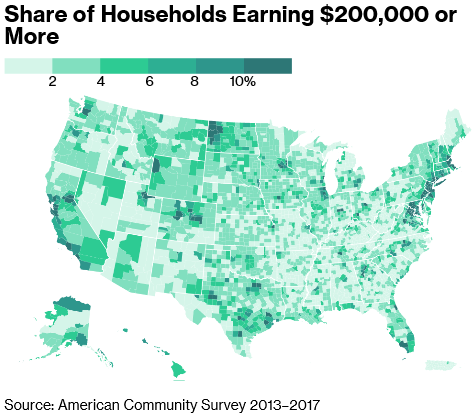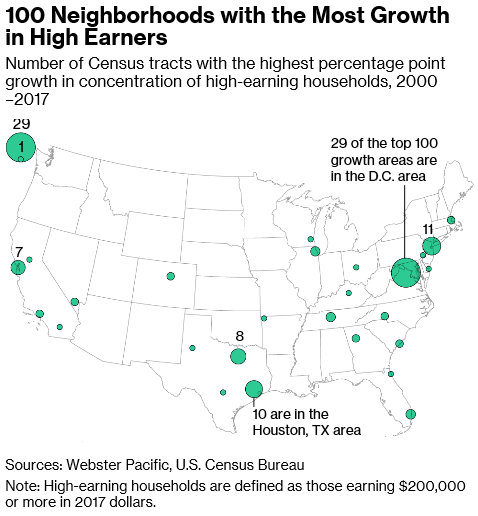Written by Bloomberg’s Reade Pickert, Jonathan Levin, and Hannah Recht. Published on Bloomberg on December 18th, 2018.
U.S. unemployment is near a 50-year low, economic growth is brisk and the stock market—despite a disappointing 2018—has paid generous returns since the financial crisis of a decade ago.

Nationally, 6.9 percent of American households bring in that much. What follows are the areas (known to the Census Bureau as tracts) that have shown the biggest increases in concentration of $200,000-and-up households since 2000, according to calculations by consulting firm Webster Pacific. It used data released on Dec. 6 and adjusted for inflation. (The ranking excludes recently created tracts, those defined as tracts of significant change and any tract with fewer than 100 households in either 2000 or 2017.)

